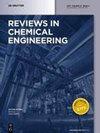The application of conventional or magnetic materials to support immobilization of amylolytic enzymes for batch and continuous operation of starch hydrolysis processes
IF 6.6
3区 工程技术
Q1 ENGINEERING, CHEMICAL
引用次数: 1
Abstract
Abstract In the production of ethanol, starches are converted into reducing sugars by liquefaction and saccharification processes, which mainly use soluble amylases. These processes are considered wasteful operations as operations to recover the enzymes are not practical economically so immobilizations of amylases to perform both processes appear to be a promising way to obtain more stable and reusable enzymes, to lower costs of enzymatic conversions, and to reduce enzymes degradation/contamination. Although many reviews on enzyme immobilizations are found, they only discuss immobilizations of α-amylase immobilizations on nanoparticles, but other amylases and support types are not well informed or poorly stated. As the knowledge of the developed supports for most amylase immobilizations being used in starch hydrolysis is important, a review describing about their preparations, characteristics, and applications is herewith presented. Based on the results, two major groups were discovered in the last 20 years, which include conventional and magnetic-based supports. Furthermore, several strategies for preparation and immobilization processes, which are more advanced than the previous generation, were also revealed. Although most of the starch hydrolysis processes were conducted in batches, opportunities to develop continuous reactors are offered. However, the continuous operations are difficult to be employed by magnetic-based amylases.应用常规或磁性材料来支持淀粉水解酶的固定化,用于淀粉水解过程的批量和连续操作
在乙醇生产中,淀粉通过液化和糖化过程转化为还原糖,这一过程主要利用可溶性淀粉酶。这些过程被认为是浪费的操作,因为回收酶的操作在经济上是不实际的,因此固定化淀粉酶来执行这两个过程似乎是一种有前途的方法,可以获得更稳定和可重复使用的酶,降低酶转化的成本,并减少酶的降解/污染。虽然有许多关于酶固定化的综述,但它们只讨论了α-淀粉酶在纳米颗粒上的固定化,而其他淀粉酶和支持类型的固定化并没有得到很好的报道或很少提及。由于对大多数用于淀粉水解的淀粉酶固定化支架的了解是重要的,因此对它们的制备,特性和应用进行了综述。基于这些结果,在过去的20年里,人们发现了两种主要的支撑方式,包括常规支撑和磁性支撑。此外,还揭示了几种比上一代更先进的制备和固定过程策略。虽然大多数淀粉水解过程是分批进行的,但开发连续反应器提供了机会。然而,磁基淀粉酶很难采用连续操作。
本文章由计算机程序翻译,如有差异,请以英文原文为准。
求助全文
约1分钟内获得全文
求助全文
来源期刊

Reviews in Chemical Engineering
工程技术-工程:化工
CiteScore
12.30
自引率
0.00%
发文量
37
审稿时长
6 months
期刊介绍:
Reviews in Chemical Engineering publishes authoritative review articles on all aspects of the broad field of chemical engineering and applied chemistry. Its aim is to develop new insights and understanding and to promote interest and research activity in chemical engineering, as well as the application of new developments in these areas. The bimonthly journal publishes peer-reviewed articles by leading chemical engineers, applied scientists and mathematicians. The broad interest today in solutions through chemistry to some of the world’s most challenging problems ensures that Reviews in Chemical Engineering will play a significant role in the growth of the field as a whole.
 求助内容:
求助内容: 应助结果提醒方式:
应助结果提醒方式:


